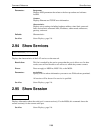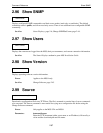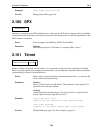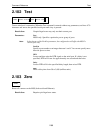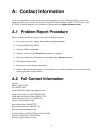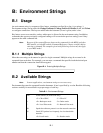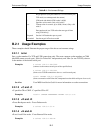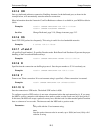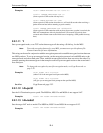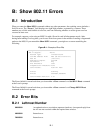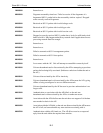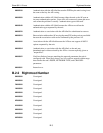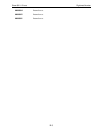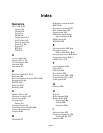
Environment Strings Usage Examples
B-4
Examples
Local>> CHANGE DEDICATED TCP 192.73.220.1:U
Local>> CHANGE DEDICATED TCP :U
(forms a passive UDP session with any host)
Local>> CHANGE DEDICATED TCP :US60
(forms a passive UDP session where the MSS will wait 60 seconds after receiving a
packet from one host before returning to passive mode)
Local> CHANGE DEDICATED TCP :4096US120
(forms a passive UDP connection with any host where once a packet is received, the
MSS will communicate with only that host until 120 seconds of inactivity have
occurred and will then return to the initial state of accepting a UDP packet from any
host.)
2.2.1.11 Y
Sets up encrypted mode, a raw TCP socket that encrypts all data using a 56-bit key, for the MSS.
Note: To use the encryption features for your MSS, you must use a special software file.
Contact Lantronix for more information.
This string can be used in conjunction with the encryption password to establish encrypted sessions between
two MSS products. To set up an encrypted session, set the encryption password on both MSS units to the
same password and reboot both units. Then, establish an encrypted session from one unit to the other. For
example, entering the command given in the example would set up an encrypted session to the second unit’s
first serial port.
Note: To change the encryption key used for encryption mode, see Crypt Password on
page 2-52.
Examples
Local> TELNET 192.0.2.25:2101Y
(where 2101 is the encrypted serial port on the MSS)
Local> TELNET 192.0.2.25:2100Y
(will give you an encrypted local prompt on the specified MSS)
See Also Crypt Password, page 2-52
2.2.1.12 LD=port#
Sets the LAT destination port to port#. The MSSLite, MSS-Via and MSS4 do not support LAT.
Examples
Local> LAT modem LN=vax8:LD=0005
2.2.1.13 LN=node#
Sets the target LAT node to node#. The MSSLite, MSS-Via and MSS4 do not support LAT.
Examples
Local> LAT modem LN=vax8:LD=0005



